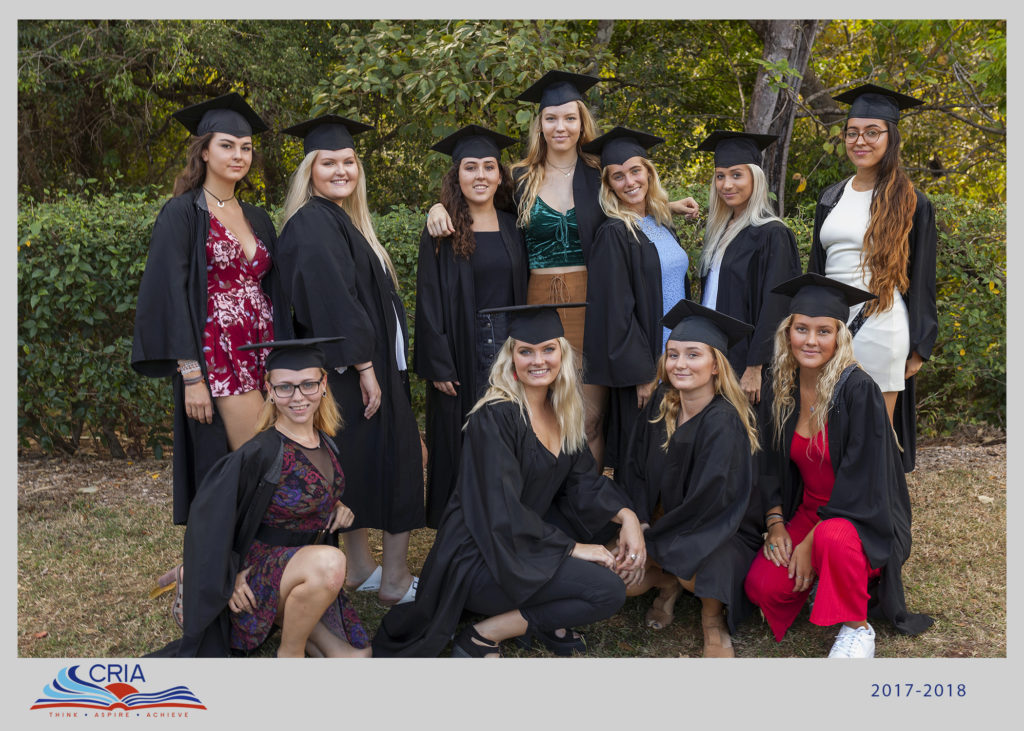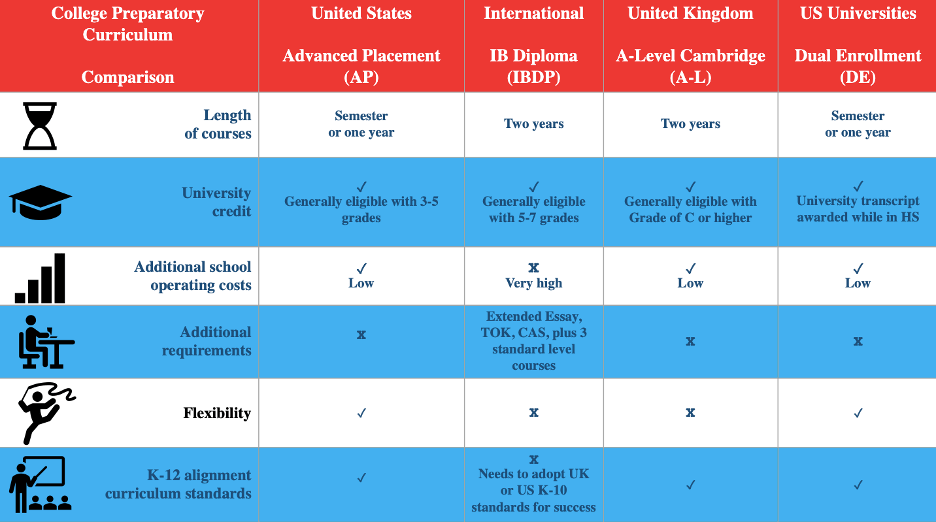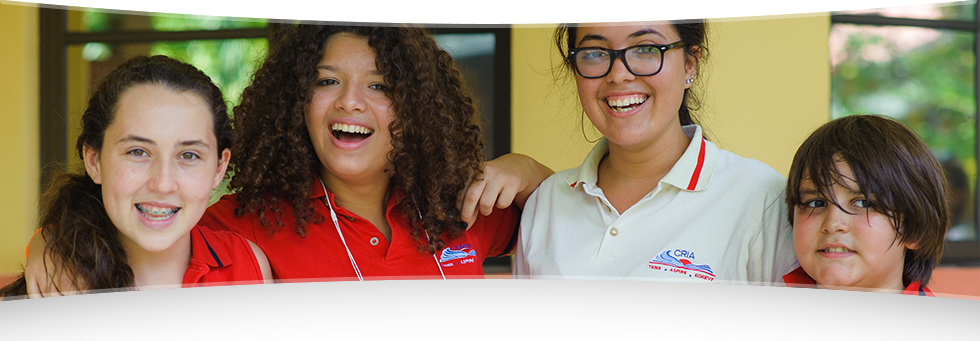 When evaluating education in Costa Rica, you’ve already voted with your feet: As a savvy and globally minded parent, you know what kind of academic experience you seek and you’re drawn to the benefits of international schools with an internationally accredited curriculum. The question is, when considering western-based programs, which is best: AP/Dual Enrollment, the International Baccalaureate (IB), or the British A-Level?
When evaluating education in Costa Rica, you’ve already voted with your feet: As a savvy and globally minded parent, you know what kind of academic experience you seek and you’re drawn to the benefits of international schools with an internationally accredited curriculum. The question is, when considering western-based programs, which is best: AP/Dual Enrollment, the International Baccalaureate (IB), or the British A-Level?
(Note that this is Part II of our Vote with Your Feet series. See Part I.)
This is a major decision: The trajectory you choose, even if your child/children are still in their early years, will influence their future academic paths and lifelong goals. And, as they grow, your choice will likely have a considerable effect on their futures, including their post-secondary opportunities.
So, we thought we’d introduce you to three of the most popular academic programs for international education in Costa Rica. We’ll cover their strengths and weaknesses, pros and cons, and desired outcomes of each, especially as they relate to the Costa Rica education system, so you can make an informed decision for your family.
Education in Costa Rica: IB Degrees, A-Level Programs, and Dual Enrollment/AP Courses
 When it comes to international schools in Costa Rica, there are three primary academic programs or paths: dual enrollment/AP programs, the IB Diploma, and British A-Levels. But before we get into that, let’s first talk about what we’re not going to talk about: Canadian and Australian curriculums.
When it comes to international schools in Costa Rica, there are three primary academic programs or paths: dual enrollment/AP programs, the IB Diploma, and British A-Levels. But before we get into that, let’s first talk about what we’re not going to talk about: Canadian and Australian curriculums.
While it is true that there are excellent international schools running the Canadian and Australian curriculums, Costa Rican international schools almost universally opt for U.S., British, or IB programs. In fact, these programs dominate the international schools of choice around the world, over the past 20 years – and their growth is only accelerating. So, within the context of international education in Costa Rica, we’ll stick to the Big Three.
The International Baccalaureate Diploma Program (IBDP)
IB Diploma programs get a lot of the limelight because, when done right, it is a rigorous and college-level program (at the IB Diploma grade levels 11-12).
That said, it can be difficult to get right – and herein lies the problem. Without getting too technical or administrative, you should know that IB programs are very expensive for a school to put in place, maintain, and administer. (And for parents to pay for; IB programs in Costa Rica are among the most expensive tuition in the country – but you don’t always get what you pay for.)
But the challenge isn’t one of sheer cost: It’s the economies of scale. And Costa Rican international schools do not have the scale. The world’s top 100 IB schools have an average size of 75+ students per grade level, or 3-4 full classes of students enrolled in each year of the IB Diploma program. No private international schools in Costa Rica, much less those in Guanacaste and Tamarindo, operate on that scale.
This is a key reason why smaller schools under the IB curriculum framework do not rank in the top: With smaller budgets, the heavy annual dues and training costs will necessarily displace other budget priorities required to ensure that all students achieve high results.
What’s more, according to 2021 IB league tables, nearly 2 of every 3 of the top 100 performing IB World Schools use the British curriculum for kindergarten through grade 10, before transitioning into IBDP capstone courses. When smaller schools attempt to run the IB World School framework, without the necessary associated IB World School teacher training and resources, paired with resources aligned to British, U.S., or similar standards of content and skills, they not only fail to meet expectations, but they also do a disservice to their students.
A-Level Cambridge (UK)
The British curriculum has a well-earned reputation as the “mother of all curriculums” in the Western tradition. The reason boils down to a balance between academic rigor and simplicity.
Upon completion of A-level grades 11-12, students can typically qualify for university credit with passing scores. Unlike with the IBDP program, A-levels have no additional requirements to bog down students with hours of additional responsibilities, i.e. integrating IB Theory of Knowledge (TOK) requirements across each course, hours of IB Community, Action and Service (CAS) requirements, a 4,000-word extended essay, and 3 standard-level required courses, all while the student tries to qualify for college credit in 3 higher-level IB courses.
Bottom line: A-levels are here to stay and growing in popularity. As a parent, you can rest assured that your child is learning the basics of academic courses within a very well-balanced program with the highest of standards.
Dual Enrollment & Advanced Placement (AP) Programs

We’ll start by saying that, at CRIA, we’ve opted for an AP and Dual Enrollment program. That said, we won’t try to convince you that it’s right for your family; we’ll just tell you why it’s the right choice for ours. (And we hope to welcome you to the CRIA family, someday soon!)
Let’s start with this: Did you know that, according to a study done by ISC Research, while university admissions officers talk of broadening the scope of what determines candidate acceptance, a full 2/3 of all universities recently reported “no change” to the weighting of their admissions criteria?
Based on that reported “no change,” secondary school graduate qualifications of external test scores, course grades, and English proficiency remain of paramount importance to gain university acceptances.
It follows, then, that a solid international education in Costa Rica would focus on these three important criteria. The question is, how to do that, in an international environment where students often enroll somewhere mid-education (although many are also with us from K-12)?
Because, here’s an extremely important consideration: If your student has not been enrolled in a top-100 type IB framework or in the British curriculum – or one with historically similar standards, such as an Australian, Canadian, Hong Kong, Singapore or American curriculum – during grades K-10, then s/he will be hard-pressed to navigate the requirements and high standards of the two-year IB Diploma program.
An IB diploma is not something that you can “just jump into,” when the time comes: It takes preparation (and the just-right preparation, at that) during the 11 preceding years.
And that’s the crux of it: When it comes to education in Costa Rica, there are few, if any, K-10 IB World School programs that have the resources, student body size, and training to prepare students for the academic rigors and IB-specific requirements that will for the necessary framework for grade 11-12 IB success. And in an international community like CRIA, we want our students to succeed.
So, where does that leave our students, who often move abroad in primary/middle school, or even in high school? How can we not only establish an easy transition to their schooling abroad, but provide them with tools for academic success? Enter the AP program and dual enrollment.
For decades, Advanced Placement (AP) tests have been the gold standard in college-level rigorous courses for ambitious students. (It may even be how you, now the parents [!], were educated as kids.) However, in more recent years, there has also been a movement toward university dual enrollment courses: university classes open to high school students and that provide high schoolers with a jump-start on college credits and a university transcript.
And so, at CRIA, our path to that success is a time-tested, enduring method of teaching academic excellence through a U.S. curriculum – a U.S. curriculum that not only emphasizes knowledge and achievement, but prepares students for their post-secondary years. And offers the opportunity to dip one’s toes into post-secondary academics and success, while still in secondary school.
And, indeed, you’d be challenged to find a university application that does not ask whether a student has taken dual enrollment courses during high school. This is a great sign: Dual enrollment is a great way to differentiate your child’s academic achievements, earn college credit, and prepare for the future.
Interested in joining the CRIA family?
It all begins with your choice of the best Costa Rica international schools. We hope you’ll consider CRIA.
We’d love to meet your family and learn about your journey to researching private schools in Costa Rica. Learn more about the CRIA admissions process and get in touch to schedule a campus visit. We look forward to it!

